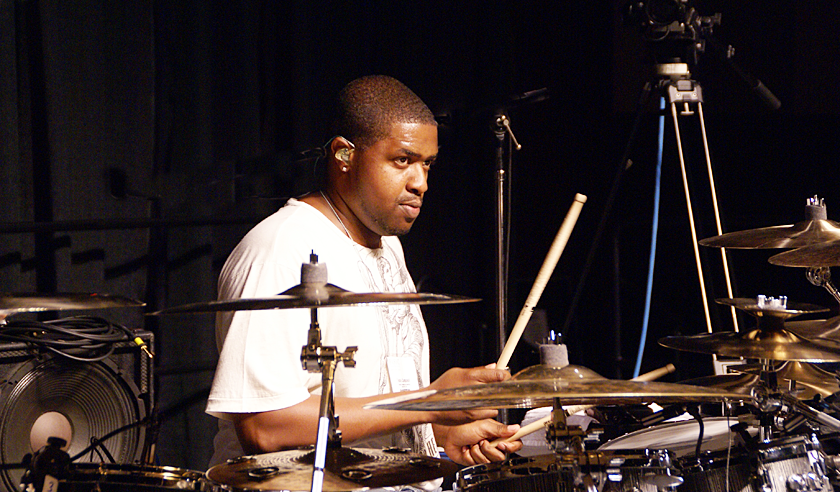

| Teddy Campbell |
|
Teddy Campbell began developing his road reputation early on. Immediately after finishing high school in Chicago, he started touring with a string of gospel-inspired stage shows. Before long, he was serving as musical director, a position rarely filled by drummers. "I don't play keyboards," says Campbell, "but I can spell out melodies, chords, and arrangements by singing. I have arrangement ideas running though my head all the time, and I'm good at retaining a lot of music because I used to have to learn so much material at once in the gospel world. But the biggest part of the musical director job is being able to get along with everyone—just being a people person, I guess."
That combination of chops and charm speeded Campbell's transition from the pit band to the pop stage. But Teddy never relinquished his gospel feel. "I guess," he says, "I try to split the difference between a loose, gospel/blues feel and locking in with a click track." That compromise didn't come easily, says Campbell. "I come from the gospel world, where we don't use clicks and loops—we just play! Playing to a click is something you have to practice almost every day. It's easier if you're playing with percussion and drum loops that have a lot of eighth- and sixteenth-notes. Working with a straight quarter-note click, with no shakers or tambourines running through the track, is a lot harder. But that's exactly what I have to do most of the time, especially in the studio. I often come in after a whole band has already recorded tracks, and I have to use that simple click to follow what everyone did. I tell you, it can be really hard when a young drummer gets thrown into that lake of fire!" Sessions of that sort have honed Campbell's ability to negotiate the exact placement of each drum in his kit. "When I first came into the game," he recalls, "I might have been aware of a 'pocket,' but I didn't think about each drum individually. I've learned to do that since then. Now I know what to do when a producer or music director asks for a little less on the hi-hat, or a stronger top on the snare, or to lay the kick back here and there." Like his style, Campbell's king-sized kit straddles two worlds. "I use a combination of birch and maple Yamaha drums," he says. "I have three Maple Absolute floor toms—a 12" on the left and a 14" and 16" on the right. I like deep drums, and maple gives me the warmth and sweetness I want. But I use birch rack toms—an 8", a 10" and a 12". The birch toms sing more and cut a little better. I tried using a birch bass drum, but I switched back to a Maple Absolute for the warmth, bottom, and heaviness. And I have three maple snares. My main one is a Custom Shop 13" x 5 1/2". I asked for those dimensions because I wanted it to have plenty of body, but the 13" gives a little more crack than a regular 14". I also have a 10" Peter Erskine signature model piccolo snare on the left and a 10"x 5" Custom Shop snare on the right, plus a second set of hi-hats on the right. I like to mix the drums within a song, using the alternate ones for accents and flavor." Is it the ability to bring a down-home feel to high-tech pop that wins Campbell so much work? "That's definitely how I got on a lot of gigs," he nods. "My style is a little different in that I try to give some of that natural, funky feel to things that might not normally be played too funky. I guess I play with a little more heart than someone who hadn't played a lot of funk and gospel might." |
 © Bernhard Castiglioni - Drummerworld
© Bernhard Castiglioni - Drummerworld|
|
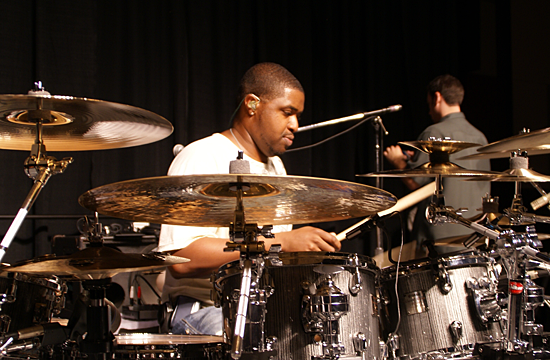 © Bernhard Castiglioni - Drummerworld
© Bernhard Castiglioni - Drummerworld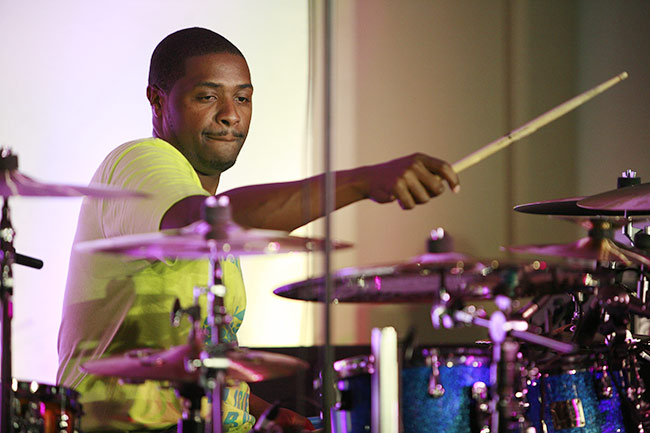
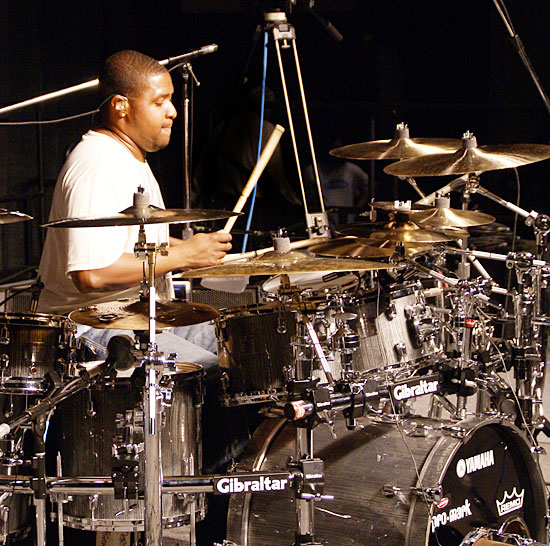 © Bernhard Castiglioni - Drummerworld
© Bernhard Castiglioni - Drummerworld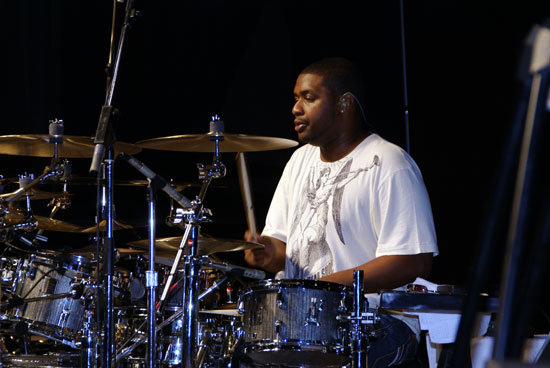 © Bernhard Castiglioni - Drummerworld
© Bernhard Castiglioni - Drummerworld
|
 © Bernhard Castiglioni - Drummerworld
© Bernhard Castiglioni - Drummerworld
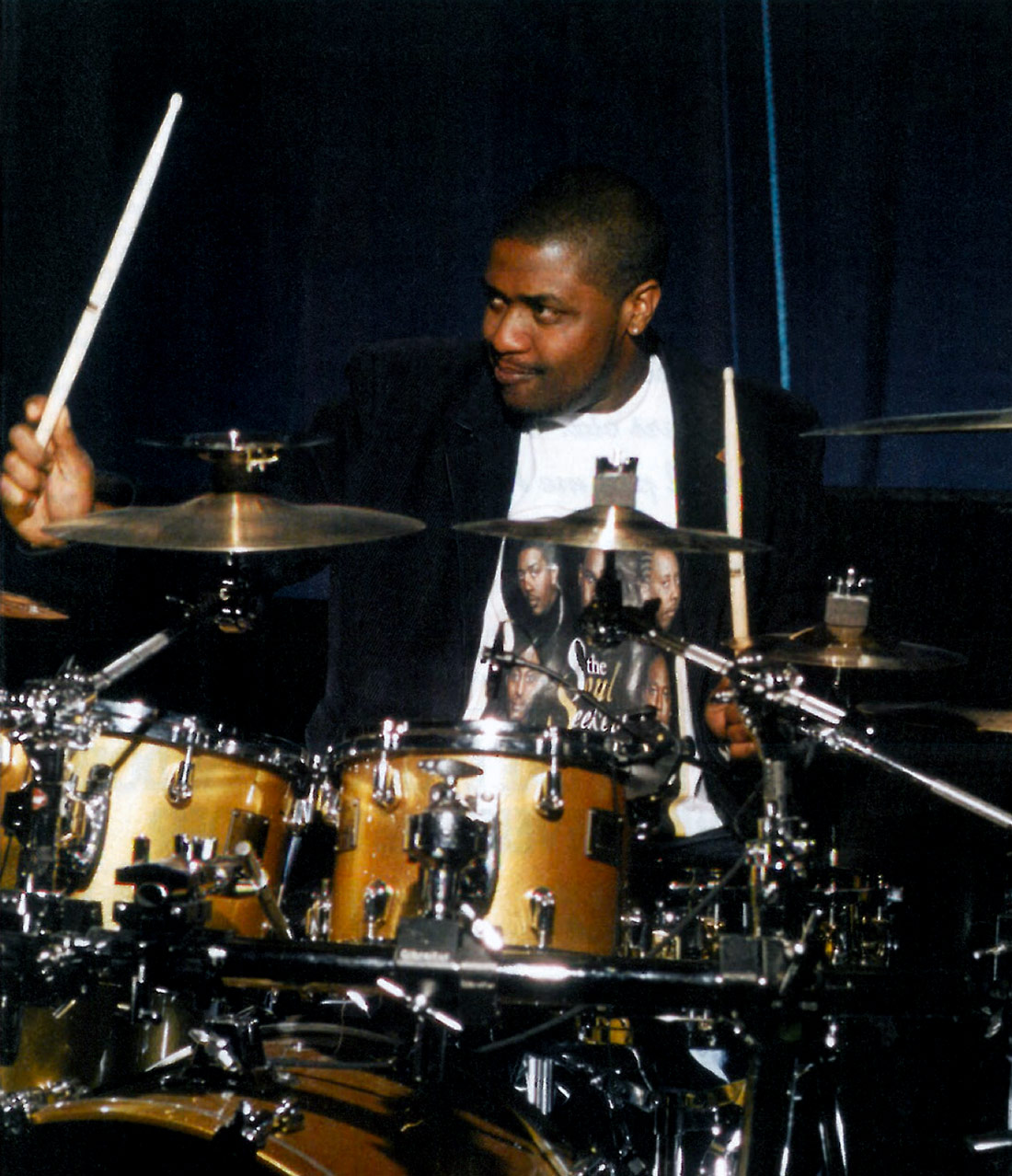
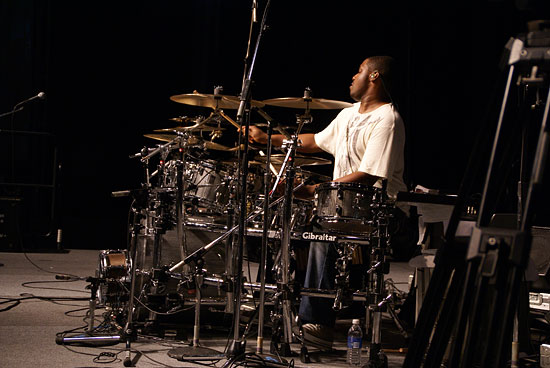
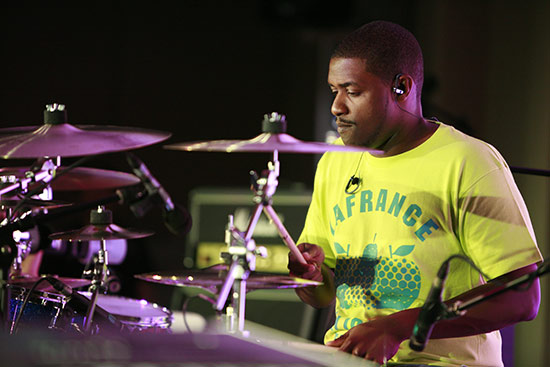
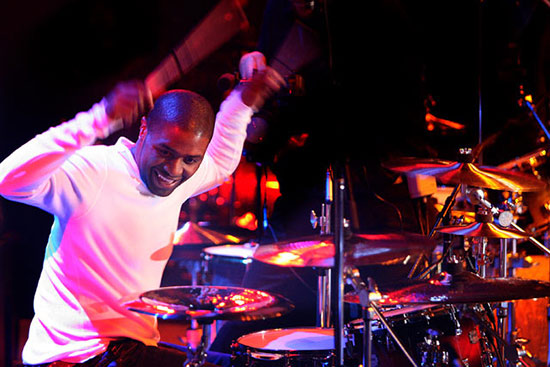 © Ronn Dunnett
© Ronn Dunnett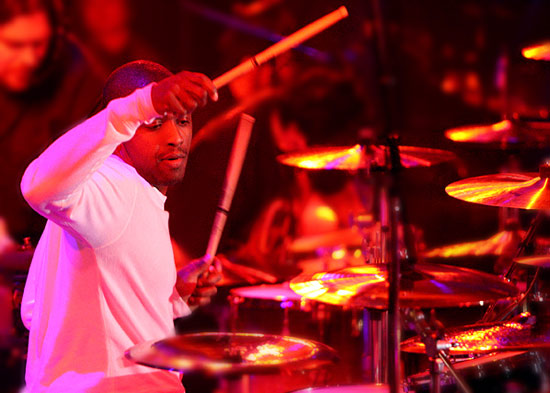 © Ronn Dunnett
© Ronn Dunnett|
|
 Teddy Campbell - Bernhard Castiglioni (Drummerworld)
Teddy Campbell - Bernhard Castiglioni (Drummerworld) 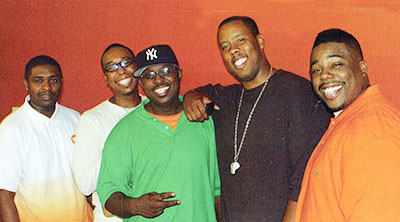 Teddy Campbell - Marvin McQuitty - Gerald Heyward
Teddy Campbell - Marvin McQuitty - Gerald HeywardNisan Stewart - Aaron Spears
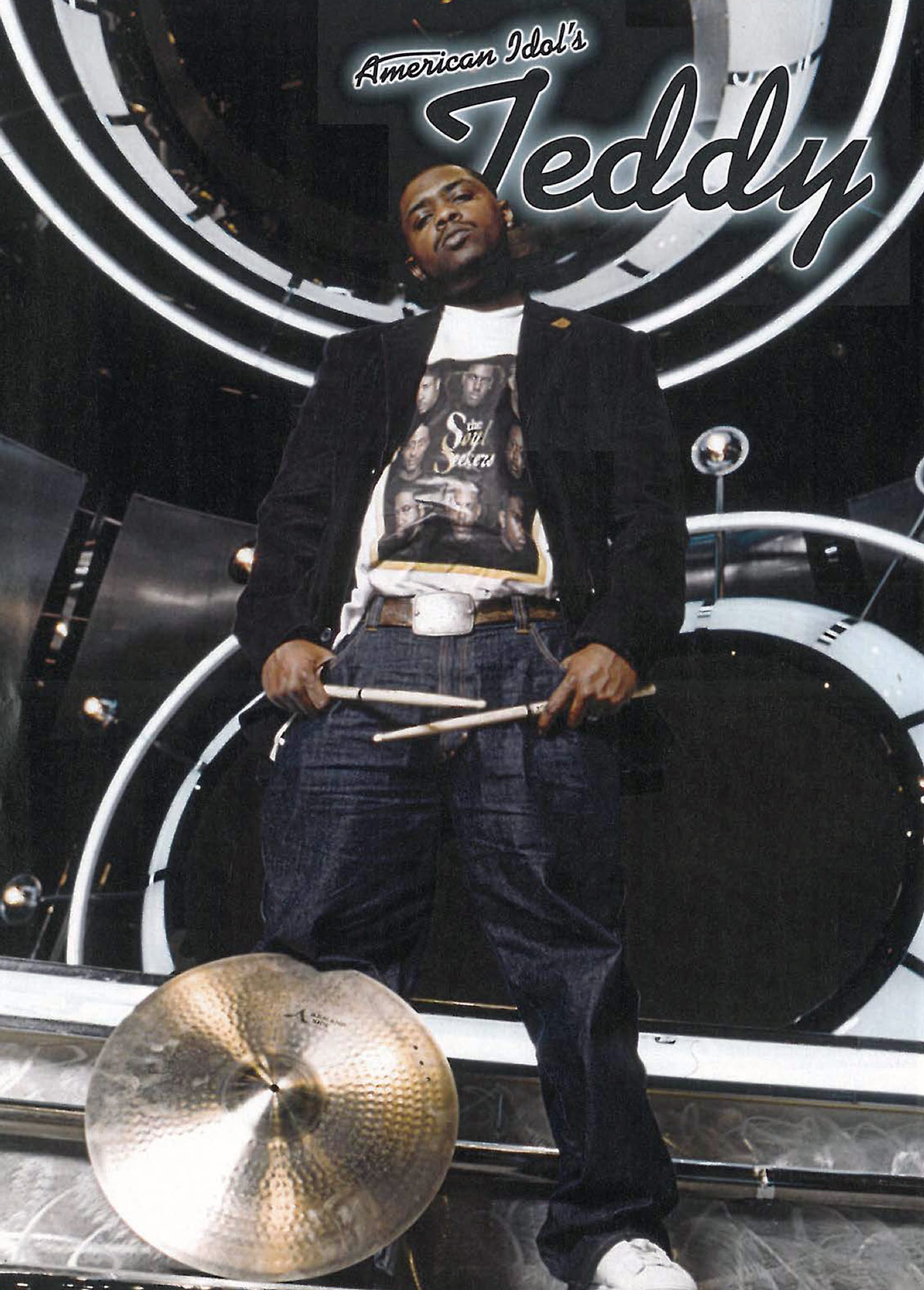
|
 © Alex Solca
© Alex Solca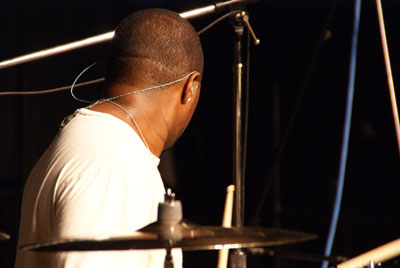
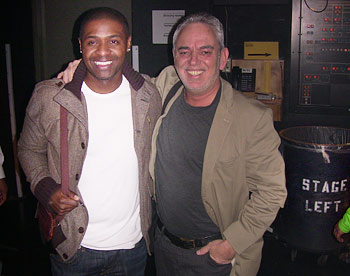 Teddy Campbell - Bernhard Castiglioni
Teddy Campbell - Bernhard Castiglioni (Drummerworld)
 thanks for your visit!
thanks for your visit!
CLICK:
the 500 Top Drummers:
the 500 Top Drummers:







